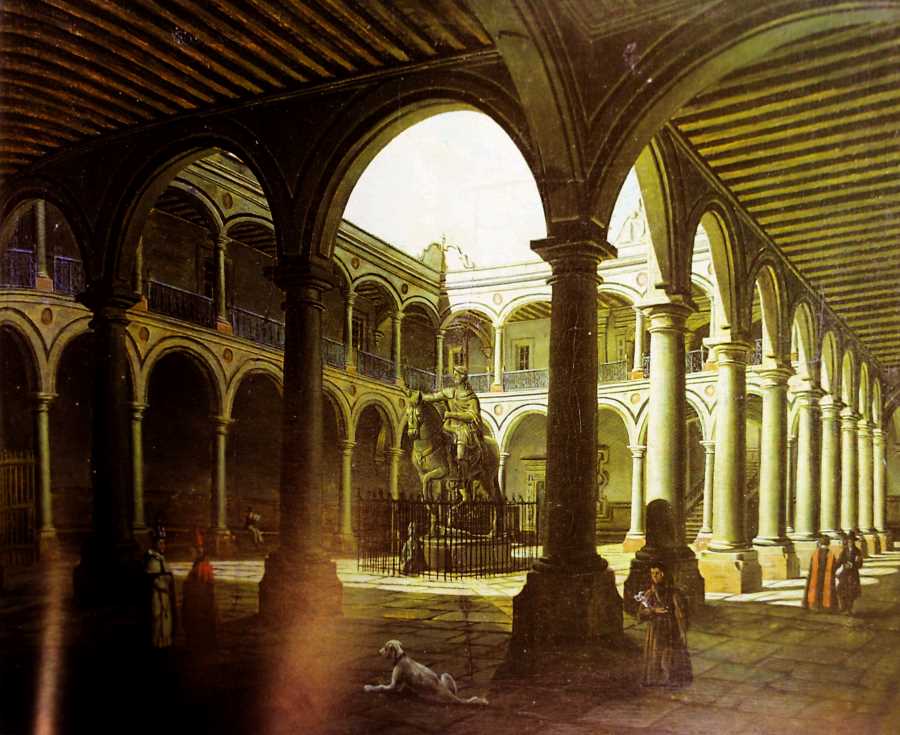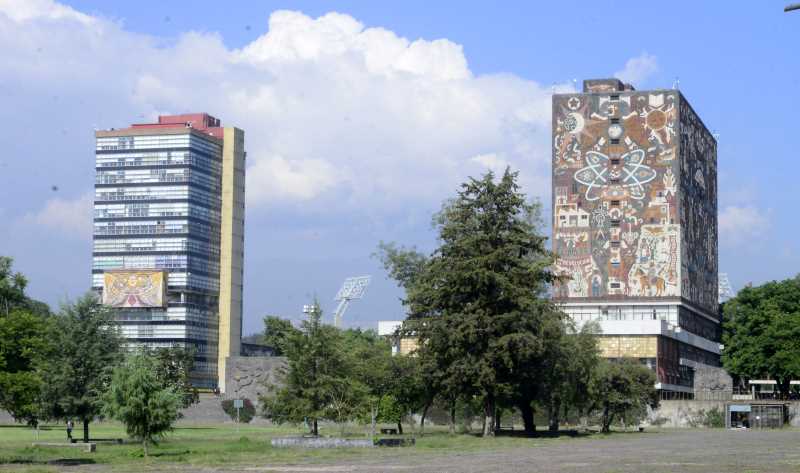How UNAM Became a Breeding Ground for Presidents, Poets, and Pixies
Royal and Pontifical University of Mexico, born in 1551, shaped by imperial whims, survived closures, morphed into National University. A saga of conquest, commitment, and bureaucratic flair unfolds over 471 years.

The need and insistence of the ecclesiastical and civil authorities of New Spain to establish an educational entity that would train their children to become officials of the imperial state led to the establishment of the Royal and Pontifical University of Mexico.
On September 21, 1551, the Spanish crown granted the foundation of the University of Mexico by royal decree, recalls Clara Inés Ramírez González, researcher at UNAM's University and Education Research Institute.
In an interview, the specialist in History of universities and Hispanic culture during the modern era, notes: it was until January 25, 1553, that Viceroy Luis de Velasco executed the Royal Decree granted by Philip II, on behalf of Charles V, for the opening of this educational institution, considered the predecessor of the National Autonomous University of Mexico.
On the occasion of the 471st anniversary of this historic event, the university professor recalls that three decades after the fall of Tenochtitlan (1521), the capital of Mexican civilization, the king signed a decree in the Peninsula for the founding of a university.
“The crown encouraged entire families to come to New Spain, so they said they did not want single men to arrive in the conquered territory. If they were single, they wanted them to marry here. This meant that the Spanish colonization supported the population process of a territory won by force”.
Ramirez Gonzalez points out that the Royal and Pontifical University of Mexico played a fundamental role in this process of settling a population that came, in principle, with the idea of getting money and improving their situation because in the Iberian Peninsula there were poor areas, such as Extremadura or Cadiz, from where most of the first Spaniards arrived in Mexico.
The settlers asked the crown for the things they thought they needed, among them the university, because they considered that they needed a place where their children would be educated to access public positions, she says.

Reach of an empire
During this period, the educational institution played an important role in the expansion of the crown of Castile and the conquest of the Mexica empire. From the 15th century onwards, the Catholic kings considered that their officials should have at least 10 years of university studies and not only benefit those who had won a battle or had an army to offer to the king.
It was the viceroy, representing the king, who oversaw organizing this first academic entity, which eventually had five faculties: Civil Law, Canon Law, Arts, Theology and Medicine. “At the beginning the professors taught their classes as they could, but little by little a generation of students was formed who later became professors.”
Ramirez Gonzalez mentions that even when the papacy granted a bull in which it gave its authorization for the degrees to be valid, that document never arrived in New Spain, and it was until the 18th century when the denomination pontifical began to be used, sometimes used as a protection against the king.
In 1570, the University had 115 students; however, by the eighteenth century, each year it graduated 20,000 graduates due to its scope, which was that of an empire; that is, “students could not only work in what is now Mexico, but also in territories such as Venezuela, Colombia or Quito”.
Then, the University had great projection and, little by little, the king used it to control territories beyond Mexico and give Mexican settlers participation in the empire, although in the first term access was only for natives and children of Spaniards, and at the beginning there were no Indians enrolled due to the disarticulation of the indigenous society of that time.
“What I see in the Conquest and in the process of populating America is that the lives of the Spaniards and the Indians themselves were reinvented, there was miscegenation, and it was a harsh society with unequal opportunities; it was an eventful history”.
In the Royal and Imperial University of Mexico there was no educational system, which was established until the 19th century. Before that, people who wished to study received initial instruction through the assistance of private tutors.
According to the expert, until the 19th century the role of the University had been important in the consolidation of Mexican society and government. However, with the Independence process, a political and economic crisis arose, which led to a break with the imperial government system; the educational institution was then considered useless, pernicious and unreformable, so it was sought to transform and modify it. During this period, the educational institution was closed and opened, until, in 1863, Emperor Maximilian decided to close it definitively.
Since the 18th century, the University had become a sort of education secretariat, which defined who granted the degrees. Young people could study at any school in the country, but they had to go to this educational institution to obtain their degrees. In 1910, when the National University of Mexico was founded, the new university took up that central charisma in the life of the country, and in the training of public officials.

Institution of reference
Likewise, Ramirez Gonzalez indicates that the University filled gaps in the State, such as the performance of cultural functions, from 1910 to 1920, tumultuous and turbulent years in Mexican society.
Then came the diversification process demanded by the complexity and growth of Mexican society in the 70s of the 20th century. Today it has museums, concert halls and movie theaters, for example, in addition to having under its protection an important part of the national heritage.
This gave the National University a leading role, even as a teacher of public officials, presidents and governors, a task that other universities joined.
This political centrality of the University during the 20th century is a tradition in Mexican society of having a strong, structured institution of reference and a cultural symbol of society, she concludes.




Beyond dusty tomes: UNAM's transformation into a cultural powerhouse, nurturing minds and enriching lives through museums, music, and cinematic treasures. Credit: UNAM




